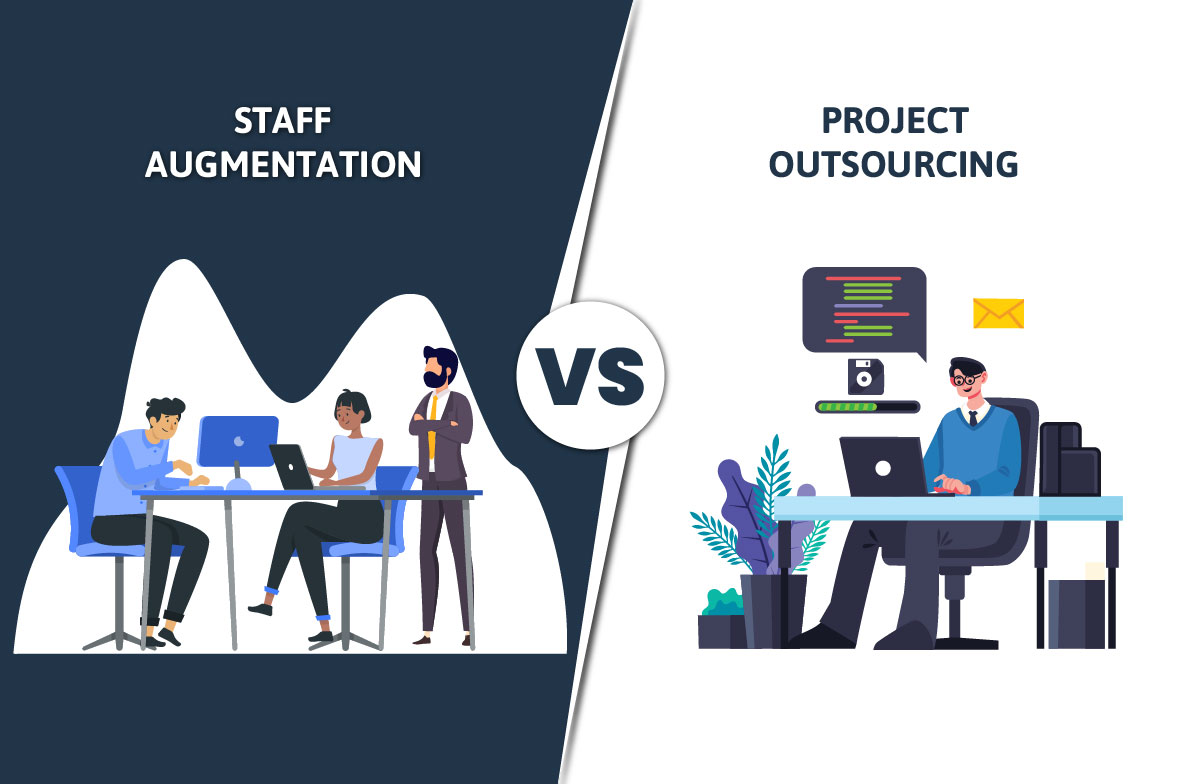IT Project Outsourcing vs. Staff Augmentation: Pros & Cons

IT Project Outsourcing
IT project outsourcing involves hiring an external company to manage a specific project or function. The external company is responsible for providing the necessary resources, expertise, and infrastructure to complete the project. This option can be beneficial for businesses looking to reduce costs, improve efficiency, and access specialized skills.
Pros of IT Project Outsourcing
Cost Savings: Outsourcing IT projects can help companies save money by reducing overhead costs associated with hiring and training employees, maintaining infrastructure, and purchasing equipment.
Access to Specialized Skills: IT outsourcing companies often have a diverse pool of specialized skills and expertise, which can be difficult to find in-house. This can help companies complete projects faster and with greater efficiency.
Scalability: Outsourcing IT projects can be a flexible solution, allowing companies to scale up or down depending on their needs. This is particularly useful for companies with fluctuating workloads.
Cons of IT Project Outsourcing
Loss of Control: Outsourcing IT projects can sometimes result in a loss of control over the project’s direction and execution. This can lead to communication breakdowns and delays.
Communication Barriers: Working with an external company can sometimes lead to communication barriers due to language or cultural differences. This can affect project timelines and outcomes.
Quality Concerns: There may be concerns about the quality of work produced by an external company, particularly if they are located in a different country with different quality standards.
Staff Augmentation
Staff augmentation involves hiring external IT professionals to work alongside in-house employees on a specific project or function. This option can be beneficial for businesses looking to maintain control over their projects and retain a certain level of expertise in-house.
Pros of Staff Augmentation
Control: Staff augmentation allows companies to maintain control over the project’s direction and execution while still accessing external expertise.
Flexibility: Staff augmentation can be a flexible solution, allowing companies to scale up or down depending on their needs. This is particularly useful for companies with fluctuating workloads.
Cost Savings: Staff augmentation can help companies save money by avoiding the overhead costs associated with hiring and training new employees.
Cons of Staff Augmentation
Integration Challenges: Integrating external employees into an existing team can be challenging, particularly if they are not familiar with the company’s culture or processes.
Knowledge Transfer: Knowledge transfer can be a challenge when working with external employees, particularly if they are only working on a project for a short period of time.
Skill Limitations: Staff augmentation may not be the best option for companies looking for highly specialized skills that are not available in-house.
Conclusion
IT project outsourcing and staff augmentation are both viable options for businesses looking to access specialized IT skills. Each option has its pros and cons, and the best solution will depend on the company’s specific needs and goals. When considering IT project outsourcing vs. staff augmentation, it’s important to weigh the benefits and drawbacks of each option and choose the one that aligns best with the company’s long-term strategy.
Our Recent Posts

March 24, 2023
Outsourcing to India: Here’s What You Need to Know
In recent years, India has emerged as a top destination...

March 17, 2023
Cultural Barriers to Offshore Outsourcing & How to Avoid Them
Offshore outsourcing has become a popular practice in today’s globalized...

March 10, 2023
How Whatsapp Utilizes Outsourcing for its Operations?
In today’s fast-paced business world, companies of all sizes are...
